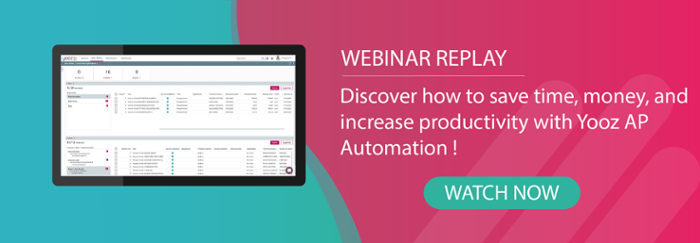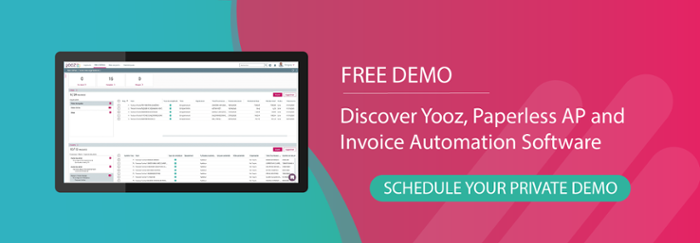It’s becoming clear that the business implications of the global pandemic will be felt for years. But crises also have a flipside: they are a shock to the system that force a reset and trigger changes that increase the chance of positive outcomes for the future. That’s certainly the case when it comes to finance departments and the financial services they rely on.
Accounting teams have been forced to deal with work-from-home mandates, skeleton staff, and a backlog of documentation that includes purchase orders, invoices, and delayed payments. In many cases, they even had to deal with serious cash-flow issues. Prodded by the viral disruptions, finance teams have realized that they have an opportunity to do better and come out ahead as the pandemic will cede into the rearview mirror and a new normal settles in.
Enter digital transformation, finally in full swing as a viable strategy to improve performance.
Thanks to new technologies and easy-to-use digital tools, finance leaders as well as accounts payable specialists can now keep tabs on their invoices and payments, better handle costs, and improve relationships with their vendors and suppliers while updating their financial services.
Digital Transformation Unlocks Big Efficiency Gains
Just as important for future competitiveness is the fact that digital transformation plays an important role in empowering businesses to adapt to ever-changing financial regulations and lets a business more easily embrace and support new models for remote or hybrid work.
Digital transformation in finance was long overdue and it's value - including the potential for massive efficiency gains - was too long ignored, as survey after survey kept pointing out long before the virus hit. Nevertheless, companies were wary of starting on this journey to digitize and, equally important, automate their processes.
New data shows the mindset has shifted for a simple reason: digital transformation can futureproof every business to withstand unexpected external shocks and along the way become more competitive and innovative through security and modern analytics. With the fluctuating issues in inflation, transportation, and supply, digitalization and automation are no longer an option but a necessity.
The Five Steps of Digitalization in Finance
So let’s walk through the steps necessary to enable and optimize digitalization in finance. We at Yooz have been on a quest since 2010 to help businesses of any size and industry automate and streamline their accounts payable workflow, which is a crucial part of the finance function.
When we recently asked more than 1,000 financial and accounting decision-makers in the United States and seven European countries how far along in their digital transformation journey they are and what key technology investments they’re planning, we were encouraged by the results. According to the 2021 State of Automation in Finance report:
- Three out of four respondents told us that COVID-19 has accelerated their digital transformation efforts of the AP function.
- Fully automated invoice processing was already in place at almost one in five companies.
- Close to one in four organizations are fully prepared for electronic invoicing.
- Cyber-security and cloud-based software such as Yooz are the top areas of investment for the coming year.
The Three Myths Holding Back Digital Transformation
Getting ready for the future involves much more than just doing away with paper invoices. It’s about tackling the entire process from issuing a purchase order to initiating a payment.
What, then, is holding finance decision-makers back from realizing full AP automation if they have recognized its promise and benefits? Three things stand out:
-
the fear of complexity,
-
using multiple systems for different documents, and
-
concerns over upsetting existing work practices.
Delaying, though, comes with various costs and risks. Primarily smaller and medium-sized businesses still use Excel for management over their account payable tasks and financial data. As a result, many CFOs their organizations more susceptible to late payments, strained supplier relationships, added costs, administrative errors and document loss, as well as outright fraud.
P2P Automation Makes Digital Transformation a Snap
There is a better way to go digital. It’s called purchase-to-pay automation by Yooz, a cloud-based platform that offers unmatched speed, savings, and security. Regardless of the size of your organization or what industry you’re in, whether you have one location or a dozen, Yooz can be up and running in under an hour. Right out of the gate and without any prior configuration, the platform will correctly capture approximately 80 percent of your invoices.
The format doesn't matter: invoices can arrive on paper to be scanned, by fax or email, or as an electronic submission. Yooz will handle them all without missing a beat, keeping human intervention to a minimum and instead relying on robotic process automation (RPA) and machine learning algorithms to extract, compare, and record any necessary data.
Digitalization Means No Invoice Left Behind
On average, US companies spend 32 hours a month managing vendor invoices and all-too-often miss due dates as cycle times can reach three weeks. As a result, many organizations pre-digitalization incur late fees and miss out on early-pay discounts. Not to mention the high costs of processing an invoice. With Yooz, both processing costs and processing time drop by 80%.
Since the company has seen more than 100 million different invoices from more than a million different vendors, even the most unusual invoice template won’t stump the platform. Every amount and word in an invoice is extracted, indexed for later searches and audits, and securely stored in the cloud. That means finding a particular invoice down the road is as simple as typing a search query into a browser.
Capture is only the first step of five that will supercharge your accounts payable function. Digitization step 2 is about reviewing each invoice: correctly GL-coding it, matching it with a purchase order, and performing additional matches to ensure an invoice is neither erroneous, a duplicate, nor fraudulent. Exceptions can drop by two-thirds when you go digital.
Step 3 sets up smart workflows to approve invoices as quickly as possible. Yooz will route invoices to the right people in the right order. Your team can view and approve them from anywhere, including a mobile device. There’s no reason for invoices to pile up.
How to Supercharge B2B Payments With Digital Transformation
Going warp speed also applies to step 4 or setting up payment. This is unfortunately an area where many companies are still far behind, risking their suppliers (as much of an asset to the business as anything else). According to market researcher Ardent Partners, roughly half of businesses in the US currently lack an electronic B2B payments solution. However it’s encouraging that another 24% aim to implement one in the coming year or two.
Yooz already has full payment automation. Vendors can be onboarded with a single email address and a one-click process to choose their preferred payment method. AP teams only set up the schedule and our platform handles the rest. Even better, using a virtual credit card improves the audit trail, boosts security and generates cash-back for every invoice paid.
Last but not least is step 5, exporting all relevant information to your company’s financial or ERP system. Yooz already supports more than 250 of these, providing an unprecedented level of transparency and visibility that benefits the entire business all the way up to the C-suite.
These are just some of the reasons why digital transformation from procure to pay is a must. It slashes costs, creates savings and new revenue streams, and puts financial intelligence at your fingertips. After all, how and how fast invoices are paid can make a crucial difference for staying in business and staying competitive.
For more information about AP and ePayables strategies for success, check out our on-demand webinar.







